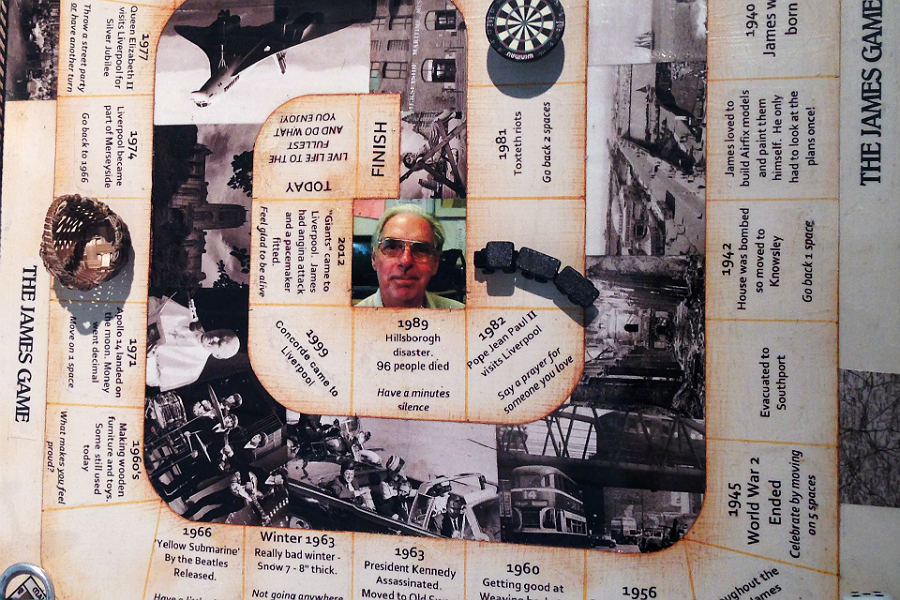Hidden Histories: From There To Here Reviewed

Visiting a provocative new exhibition at the Museum of Liverpool, Jade French explores the unseen history of people with learning difficulties and asks: why aren’t we doing more in our galleries to make ideas accessible?
The Museum of Liverpool’s latest exhibition, From There To Here: The Hidden History Of People With Learning Difficulties In Merseyside, aims to explore and celebrate the social and cultural history of people with learning difficulties over the past 100 years, which has often remained unseen.
The exploration and celebration of disability in our galleries and museums is growing. Institutions are beginning to respond to the absence of disability-related narratives in displays, and this exhibition — whilst small — supports the audience in exploring the attitudes, both past and present, that people with learning difficulties face.
Part of a larger two-year project called People Like Us, which is funded by the Heritage Lottery, this exhibition has been developed by Wicked Fish, a performing and creatives arts company, along with participants from Moving On With Life and Learning, a University of Liverpool affiliated organisation dedicated to promoting social inclusion for people with learning disabilities. As well as viewing displays, visitors to the exhibition can also experience short performances presented by actors from Wicked Fish, inspired by people’s stories uncovered by the company during the project, as well as talks and guided tours.
What to expect from this exhibition? I really wasn’t sure. In truth, it isn’t often that I attend exhibitions about people with learning difficulties, let alone by them. As I think of myself as a socially engaged artist, that alone is refreshing, and immediately made me consider my preconceptions and expectations.
As I climb the curving staircase inside the Museum of Liverpool up to the second floor, the first thing I see are large words in vinyl on the wall: ‘Ineducable’, ‘Deeply defective’, ‘Subnormal’. Arresting words that at various points in our history were used to label people with learning difficulties by professionals. A poignant reminder of disability and its difficult past.
Continuing to explore the space, I come across a series of portraits, images of the exhibition organisers, and above them more vinyl lettering. These words — ‘Empowerment’, ‘Making History’ and ‘To be heard’ — are a stark contrast to its neighbouring wall and reminiscent of the self-advocacy movement. On the whole, the exhibit embraces different sections, some examining local history and others exploring the project participants’ lives and personal experiences. It’s an eclectic mix of local history, performance art, photography and crafts.
For me, the best aspect of the exhibition is Real Lives; focusing on personal life stories in collaboration with local artists Lindsay Hesketh, Annette Jamieson and Claire Trussell, to create individual artworks from oral testimonies. This included a beautifully crafted board game called The James Game (pictured) by James O’Hara and Anette Jamieson. Each square on the board moves the player through James’ life, with references to history along the way: “1963: President Kennedy Assassinated. Moved to Old Swan. Go back to the start”. Not only do you get a sense of James’ life in tandem with what he remembers from that time, we see his personality and humour too. This is an innovative approach to capturing and displaying personal history and experience. As a visitor, I remain curious about the process behind the artworks and feel more detail about these collaborations would have been fascinating.
My only issue with the exhibition is that I find it overly textual. Whilst there are great images and some objects on display, oddly much of the exhibition can only be understood through reading text. This presents a problem; the audience for this exhibition surely targets and includes people with learning difficulties? Renowned researcher Jan Warmsley suggests that the consideration of accessible information is vital, as “print is possibly the most difficult communication medium for people with learning disabilities to access or control.” I wonder whether the brilliant detail of the exhibition may be lost on some of its visitors. A missed opportunity, perhaps, for some innovative interpretation from the National Museums team.
From There To Here is an ambitious project, and for me highlights a need for galleries and museums to be more diverse, reflecting all members of our society. In the words of former Edinburgh Festival Director Sir Brian McCaster: “We live in one of the most diverse societies the world has ever seen, yet this is not reflected in the culture we produce, or in who is producing it.” I believe the From There To Here exhibition begins to address this gap, and at the very least starts a conversation about what we’re interested in: knowing about people, or knowing with them?
Jade French
From There to Here at the Museum of Liverpool continues until 13 July 2014. Free entry, open daily 10am-5pm





